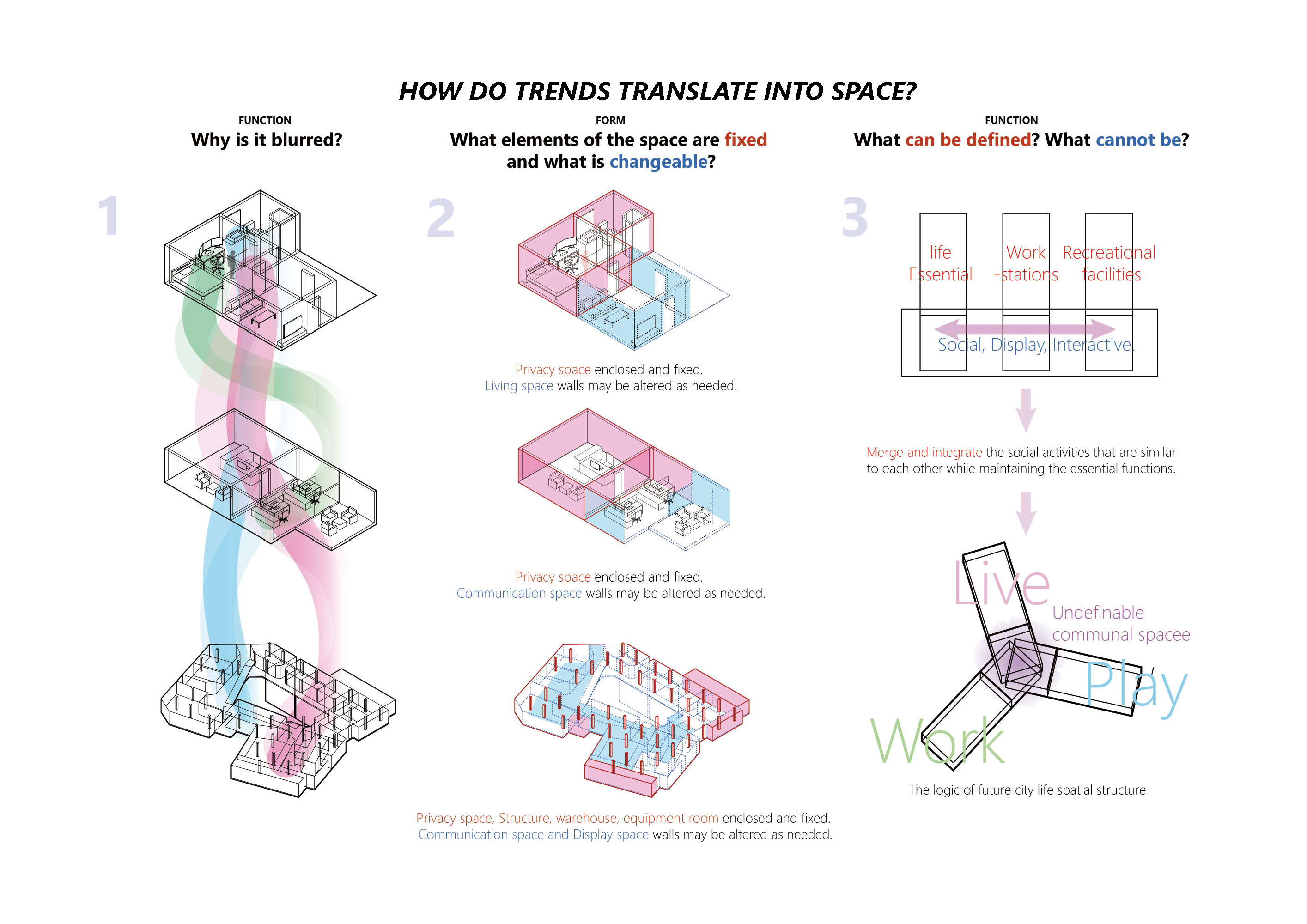ABSTRACT
In the context of rapid population expansion, limited resources, and advanced technology, the introduction of virtual worlds seems like an elixir. Virtual and augmented reality allows people to choose their own spaces, sites, atmospheres, and even avatars and modes of interaction. As a result, resources can be shared to a greater extent, geographical boundaries blur, and the physical characteristics of major cities around the world converge. Virtual worlds, or the Metaverse, are a blend of all aspects of digital technology that enhance the human experience and change the way individuals perceive, process, and interact with the world.
In the future, visual and auditory experiences will compress and translate into the Metaverse, but other subtle sensory experiences like touch, smell, and taste will be difficult to simulate fully. Architectural spaces will integrate the dynamic and changeable spatial functions of Live, Work, and Play to accommodate new lifestyles. Three-dimensional multimedia interactive layers will be fused into the space, providing infinitely updated information. As a result, the building would no longer be a silent solid. Instead, the physical space, supported by technology, will also strengthen the connection between people in the surrounding community.
Within this framework, this thesis explores how the public will experience the simultaneous existence of real and virtual experiences in the city on a community scale. Facilitated by this hybrid experience of metropolitan life in the future, architectural spaces would be able to embrace both digital information and physical engagement.















